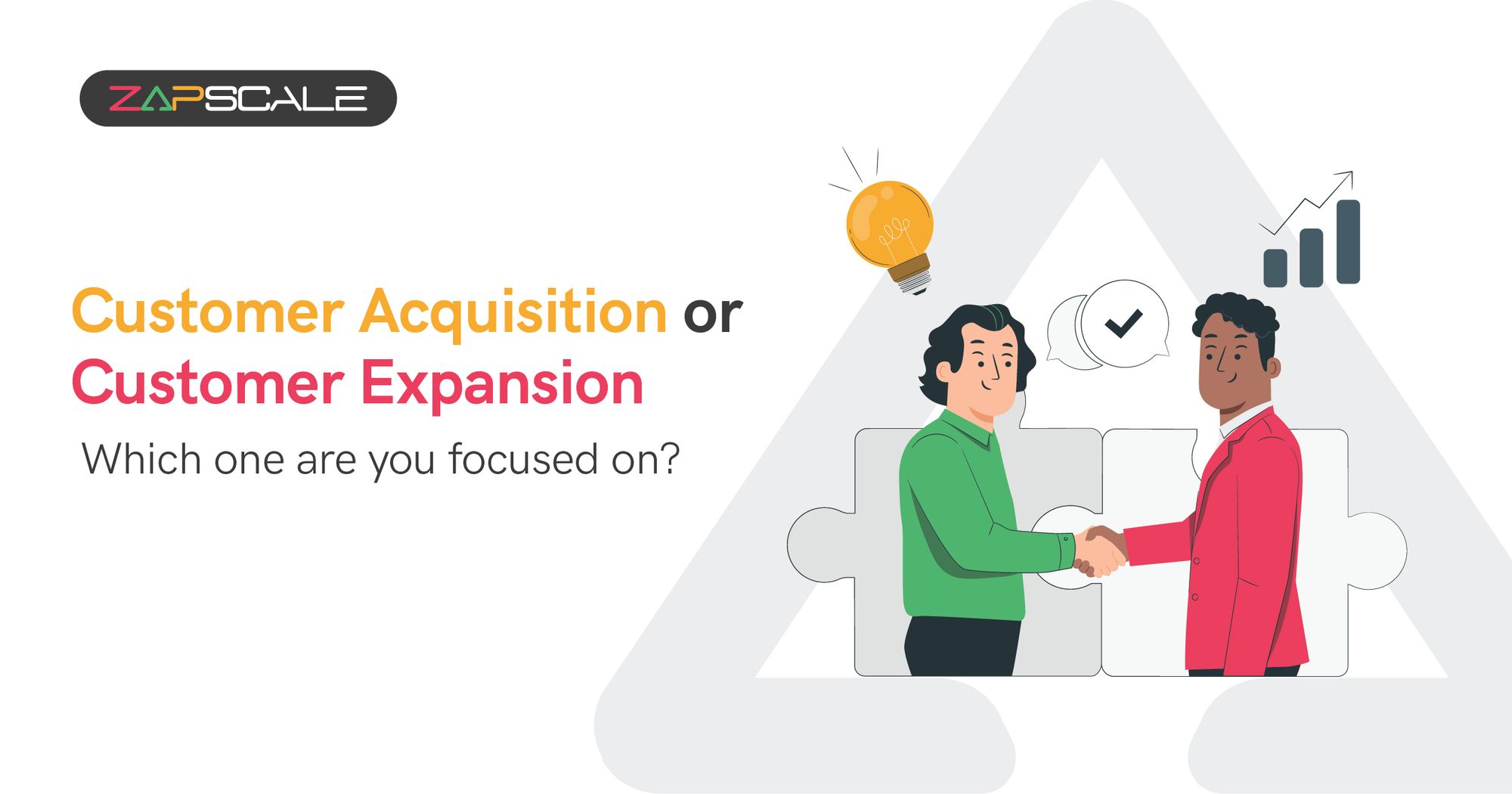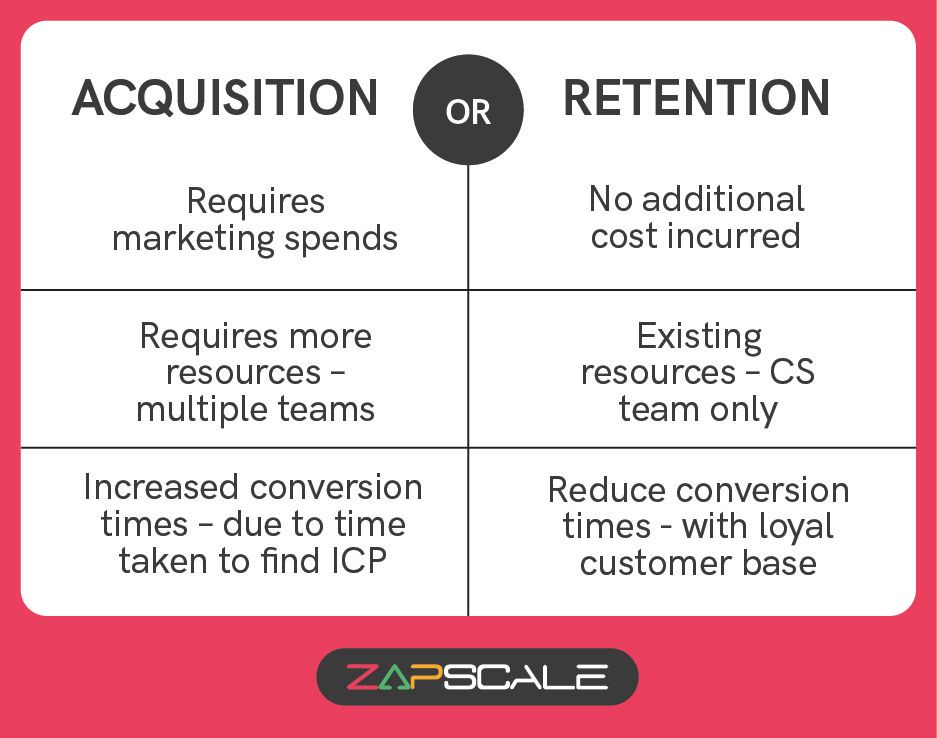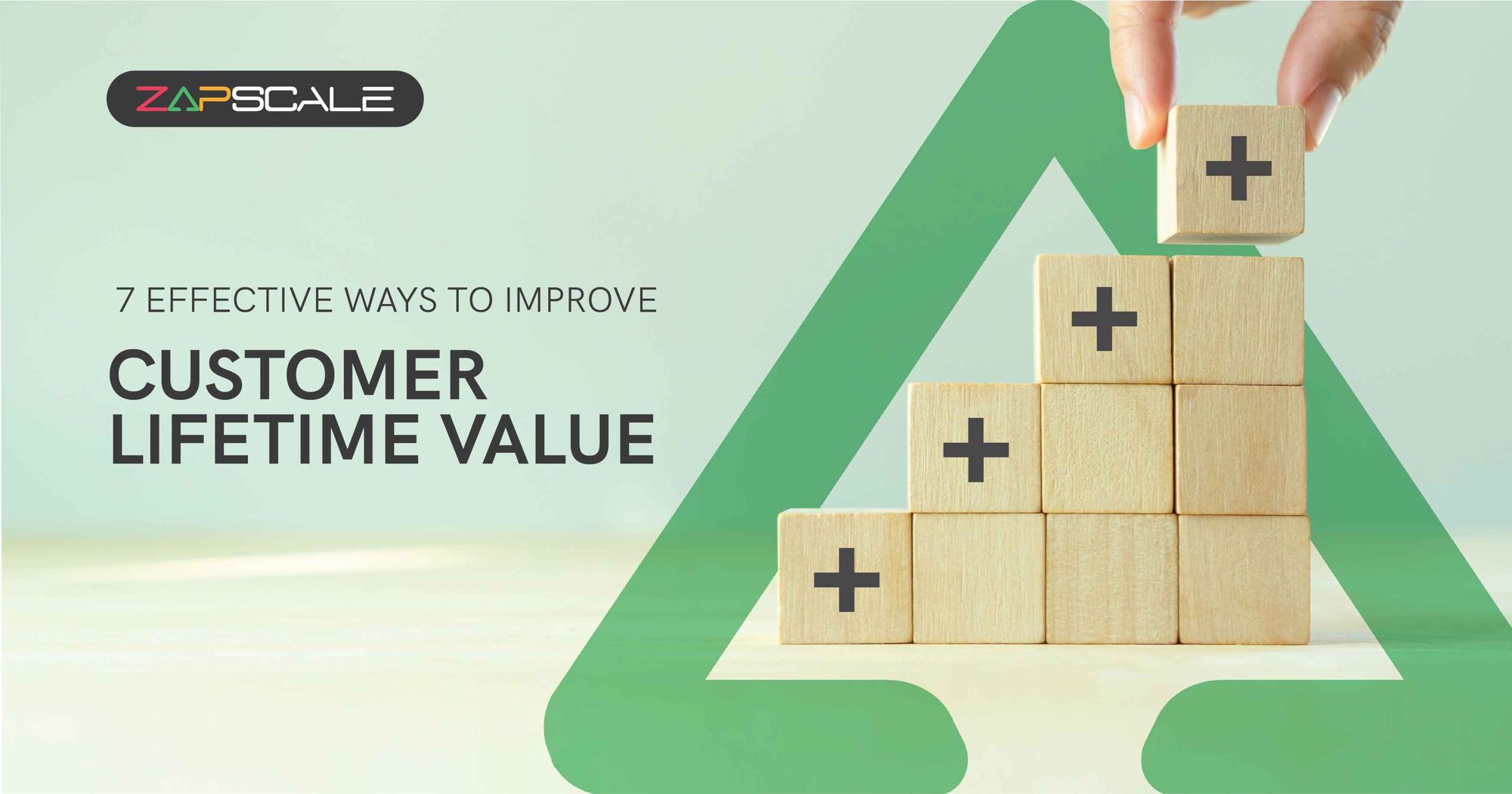CATEGORY > Customer Acquisition
Customer Acquisition or Expansion - What are you focused on?

The evergreen question that every SaaS marketer is trying to find answers to!
Introduction
Are you, like anyone in the SaaS space struggling to understand this volatile market and looking to enhance your sales cycles or customer retention strategies? If the answer to that is yes, read along to know more about how in 2023, the focus on sales is going to be stabilized and how the shift to retention and expansion is going to take place.
It’s like being in between a rock and a hard place to make this decision - do we focus on acquiring new customers or do we retain and expand?!?! Especially in times like the current market, we are all being forced to strategize in order to put in efforts in the place that is likely to yield the desired results.
A recent poll on LinkedIn suggested that companies are likely to keep their Sales team size the same or rather become lean and smaller. Think about what that suggests. With reduced manpower & limited budgets for SaaS tools, it is critical that you build an offering that has the power to stick around.
Having said that, it makes more sense to think about leveraging your existing customer base. Isn’t it? It’s easier said than done, but it seems like a practical way forward.
Why is Customer Expansion necessary?
Here’s why I feel that expansion as a strategy should be considered a pivotal shift that is needed for 2023:
1. Reduce Conversion Time
With sales cycles’ turnaround times increasing by the day, it’s only fair that we dig into our existing customer base to understand their use case better by enhanced discovery calls to drive expansion within the accounts.
Instead of longer sales cycles that include prospecting, qualifying, pitching, and then selling; it is better to dig up your existing customer base, set up calls to discover their value proposition how your product solves it and provide the desired solution. It’s that simple. Focusing on reducing conversion times will have a 10-fold impact on factors like customer acquisition costs, which play a very critical role in any SaaS business along with metrics like Net Revenue Retention and Gross Margin.
2. Reduce Acquisition Costs
If you leverage your existing customer base, by identifying the 20% that contributes to 80% of your revenue (the classic Pareto principle can never go wrong), you’ve saved time, effort, and money already!
Statistics show an increase in customer retention by 5% can lead to a company’s profits growing by 25% to around 95% over a period of time.
Let me help you list factors that will help you understand why it’s better to retain than acquire.
3. Increase Profitability
Sales teams are now offering higher discounts to teams with limited spending capacity and reduced budgets for SaaS tools that enable their businesses, thereby drastically reducing the profit margins.
With only critical spending in play, wouldn’t it be better to showcase what your product is delivering to a bunch of your loyal customers and derive more value from this base?
You’d ask how? Retain and Expand! Cross-selling/Up-selling opportunities are easier to identify with the relationships you have already built and likewise, the customer, won’t feel a pinch as they will be able to see the returns you are providing for. It’s a win-win for all.

How to focus on Customer Expansion?
Wondering how to go about driving this change? Here’s what you need to do:
1. Build your CS team
With reducing sales teams, the next order lies in increasing CS teams. Expanding CS teams can focus on the existing customer base by strategizing accounts into buckets like - Enterprise, Maintain & Grow accounts. Watch out for what this account bifurcation means in the coming days.
2. Improve your CS processes
How do you envision CS as a function in your organization? With detailed processes around onboarding, implementation, adoption, retention, and operations, one can enhance the CS function and make it not just a delight function but also a revenue-generating one. Each of these sub-functions has so much scope within themselves, that if done correctly, there can be a stream of expansion literally at every stage.
3. Add CS tools to track data
How would all of this be possible without effective data mapping and analysis? Use the right tool to direct and guide you to take the necessary next steps and you are good to go!
Playbooks, workflows, alerts, and communication. So much can be automated while you focus on identifying greener pastures within your accounts. How to decide what CS tools work for you best? Keep reading on as I share more about what & how a good CS tool can help you with your expansion strategies.
To sum it all up, I don't mean to say that customer acquisition has to stop altogether. What I am trying to bring your attention to is a wise split between the acquisition versus retention efforts and allocation of resources.
Frequently Asked Questions (FAQs)
1. What is the difference between customer acquisition and customer expansion?
Customer acquisition involves strategies to attract new customers to a business. It includes marketing tactics, sales strategies, and other major initiatives to introduce potential customers to the company’s products and services whereas customer expansion focuses on increasing revenue from existing customers. It includes upselling, cross selling, and enhancing customer relationships to retain customers.
2. Why is customer expansion important if we are already focusing on customer acquisition?
Customer expansion is crucial because acquiring new customers often costs more than retaining existing customers. By focusing on customer expansion, businesses can maximise customer lifetime value of their current customers and improve overall profitability. It also helps in stabilising revenue streams and reducing dependency on new customer acquisition efforts.
3. How can a company balance efforts between customer acquisition and customer expansion?
A company can balance efforts by:
- Allocating resources and budget proportionally to both activities
- Using data analytics to identify opportunities for growth in both areas
- Implementation of integrated marketing strategies that target new prospects while engaging existing customers
- Continuously assessing and adjusting based on performance metrics and customer feedback
ABOUT THE AUTHOR
Popular from Customer Acquisition
Quality Content,
Straight To Your Inbox!
Subscribe for the latest blogs, podcasts, webinars, and events!

Write a Blog
If you have experience in CS and
a flair for writing, we’d love to
feature you.
Write to us on
hello@zapscale.com





